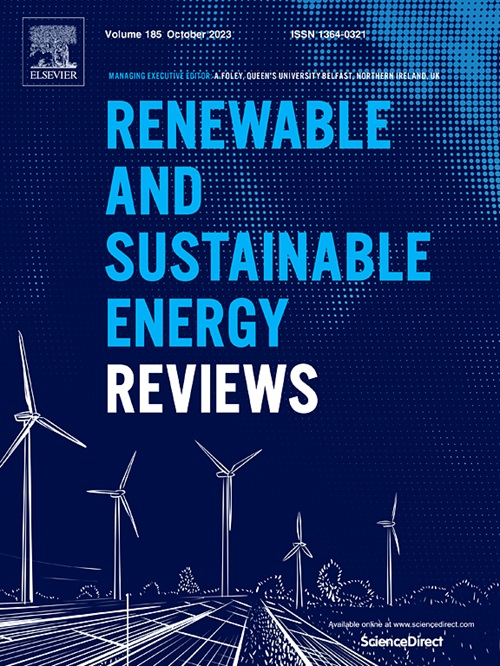Pure or blend: Microbial cultures in the race to optimize butanol production
IF 16.3
1区 工程技术
Q1 ENERGY & FUELS
引用次数: 0
Abstract
The need to mitigate environmental degradation and reduce dependence on depleting fossil fuel reserves has intensified the search for sustainable energy alternatives, with butanol emerging as a promising alternative fuel due to its excellent fuel properties and compatibility with existing gasoline infrastructure. This review critically examines the role of microbial fermentation in butanol production, focusing on the comparative merits and limitations of pure and mixed culture approaches. Pure cultures, particularly solventogenic Clostridium species, offer advantages in metabolic pathway manipulation and process predictability but are constrained by limited substrate utilization and susceptibility to contamination. Mixed microbial consortia, while providing greater metabolic diversity and environmental resilience, pose challenges in process control and consortium stability. Key advancements in metabolic engineering, strain development, and process optimization are highlighted, emphasizing the integration of innovative molecular techniques such as next-generation sequencing, stable isotope probing, and microfluidics to enhance fermentation processes. Substrate utilization strategies, ranging from simple monosaccharides to complex lignocellulosic biomass and syngas, are evaluated for their impact on production efficiency and economic viability. Furthermore, the review addresses major challenges, including feedstock availability, butanol toxicity, and product recovery, alongside emerging solutions involving genetic engineering and separation technologies. Synthesizing recent research and industrial progress, this review provides actionable insights for optimizing butanol production. It advocates for hybrid strategies that combine the precision of pure cultures with the robustness of mixed consortia, paving the way for scalable and sustainable biofuel solutions. Bridging scientific innovation with industrial application, this review underpins the transformative potential of biobutanol in driving future energy systems.

纯或混合:优化丁醇生产的微生物培养
为了缓解环境恶化和减少对日益枯竭的化石燃料储备的依赖,人们加强了对可持续能源替代品的探索,丁醇因其优异的燃料特性和与现有汽油基础设施的兼容性而成为一种有前途的替代燃料。这篇综述严格审查了微生物发酵在丁醇生产中的作用,重点是纯培养和混合培养方法的比较优点和局限性。纯培养物,特别是溶剂型梭菌,在代谢途径操作和过程可预测性方面具有优势,但受底物利用率有限和易受污染的限制。混合微生物群落虽然提供了更大的代谢多样性和环境适应性,但在过程控制和群落稳定性方面提出了挑战。重点介绍了代谢工程、菌株开发和工艺优化方面的关键进展,强调了新一代测序、稳定同位素探测和微流体等创新分子技术的整合,以增强发酵过程。底物利用策略,从简单的单糖到复杂的木质纤维素生物质和合成气,评估了它们对生产效率和经济可行性的影响。此外,该综述还讨论了主要挑战,包括原料可用性、丁醇毒性和产品回收,以及涉及基因工程和分离技术的新兴解决方案。本文综合了国内外研究和工业进展,为优化丁醇生产提供了可行的见解。它倡导混合战略,将纯培养的精确性与混合财团的稳健性结合起来,为可扩展和可持续的生物燃料解决方案铺平道路。这篇综述将科学创新与工业应用相结合,巩固了生物丁醇在推动未来能源系统方面的变革潜力。
本文章由计算机程序翻译,如有差异,请以英文原文为准。
求助全文
约1分钟内获得全文
求助全文
来源期刊

Renewable and Sustainable Energy Reviews
工程技术-能源与燃料
CiteScore
31.20
自引率
5.70%
发文量
1055
审稿时长
62 days
期刊介绍:
The mission of Renewable and Sustainable Energy Reviews is to disseminate the most compelling and pertinent critical insights in renewable and sustainable energy, fostering collaboration among the research community, private sector, and policy and decision makers. The journal aims to exchange challenges, solutions, innovative concepts, and technologies, contributing to sustainable development, the transition to a low-carbon future, and the attainment of emissions targets outlined by the United Nations Framework Convention on Climate Change.
Renewable and Sustainable Energy Reviews publishes a diverse range of content, including review papers, original research, case studies, and analyses of new technologies, all featuring a substantial review component such as critique, comparison, or analysis. Introducing a distinctive paper type, Expert Insights, the journal presents commissioned mini-reviews authored by field leaders, addressing topics of significant interest. Case studies undergo consideration only if they showcase the work's applicability to other regions or contribute valuable insights to the broader field of renewable and sustainable energy. Notably, a bibliographic or literature review lacking critical analysis is deemed unsuitable for publication.
 求助内容:
求助内容: 应助结果提醒方式:
应助结果提醒方式:


